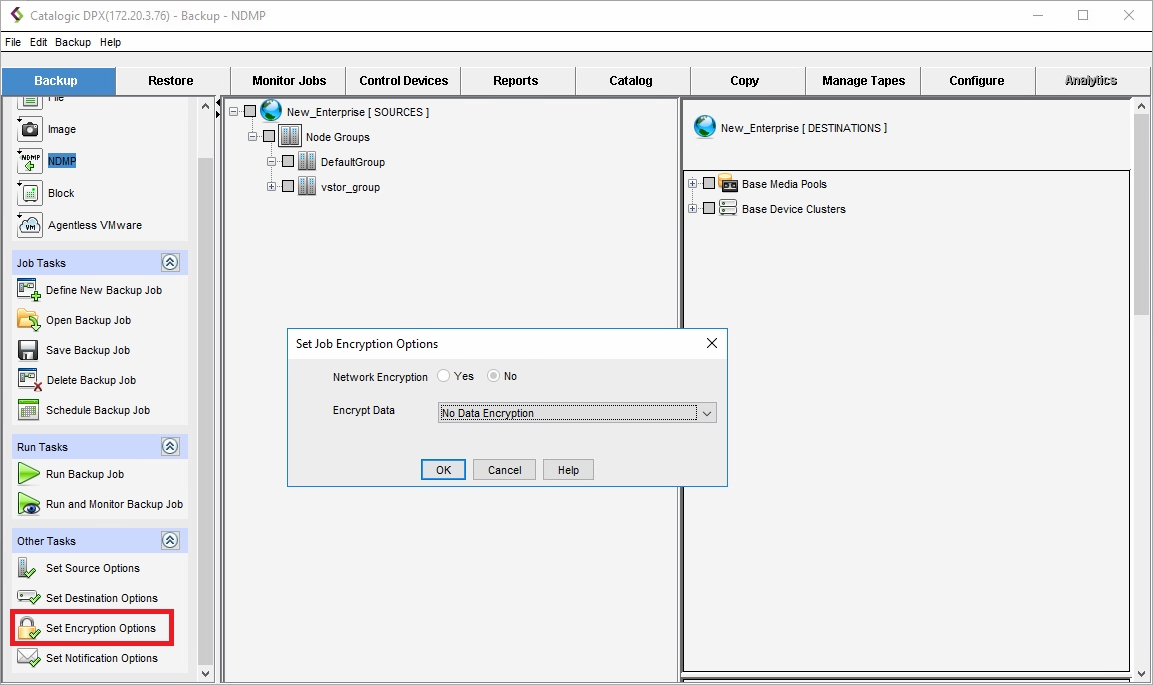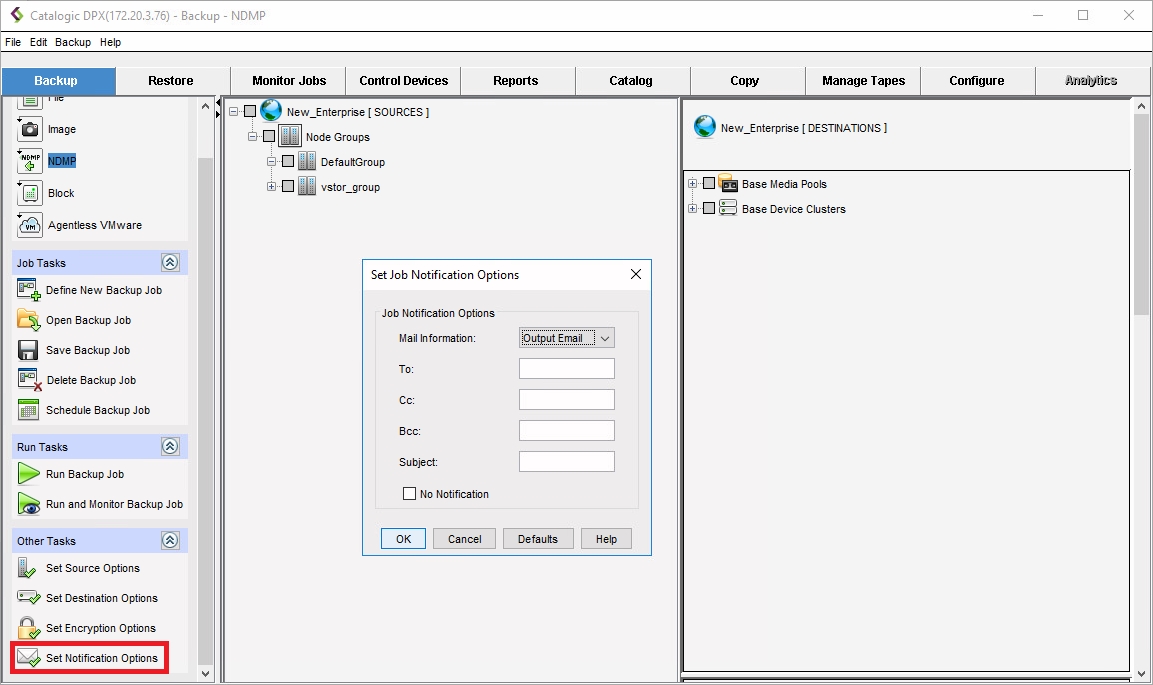Other Job Options for NDMP Backup
Apart from source and destination options, DPX offers some additional backup job options, such as Job Encryption options and Job Notification options. They are available from both interfaces as presented below.
Job Encryption options
The Set Job Encryption Options dialog controls how and when a job is encrypted.
To set backup encryption options:
Open the Set Job Encryption Options dialog box by doing one of the following:
Right-click the Enterprise name or icon to display a context menu. Then select Set Encryption Options.
From the menu bar, select Backup > Set Encryption Options.
On the task panel, click Set Encryption Options.
The Set Job Encryption Options dialog box appears.
Complete the Set Job Encryption Options dialog box as needed.

Network Encryption
Encrypt data while transmitting it through networks to enhance security. Typically, the encrypted data transfer can lower the data transfer speed.
Yes
Enables encrypted data transfer.
No
Data transfer without encryption.
Encrypt Data
Specifies if the data written to tape is encrypted. This option does not relate to data transport. If network transport encryption is important, use the Network Encryption option.
No data encryption
Data is not encrypted at the device server.
Encrypt data at the device server (primary and twin tape)
Data is encrypted at the device server of both the primary and twin tapes. Hardware compression does not matter if same tape model/media is used.
Encrypt data at the device server (primary tape only)
For the primary tape, data is encrypted at the device server. Hardware compression does not matter.
Encrypt data at the device server (twin tape only)
For the twin tape, data is encrypted at the device server. Hardware compression must be disabled during original backup job.
Job Notification options
The Set Job Notification Options dialog controls who receives messages pertaining to the current job when it is run.
To set backup job notification options:
Open the Set Job Notification Options dialog box by doing one of the following:
Right-click the Enterprise name or icon to display a context menu. Then select Set Notification Options.
From the menu bar, select Backup > Set Notification Options.
On the task panel, click Set Notification Options.
The Set Job Notification Options dialog box appears.
Complete the Set Job Notification Options dialog box as needed.

An explanation of each field and the available choices follows:
Mail information
Two sets of mail information can be specified:
Output Email
Specifies that the subsequent fields apply to reports that are sent when a job has completed.
Operator Email
Specifies that the subsequent fields apply to mount requests, error messages, and informational messages that are sent during a job.
To
The email address of the primary recipient of your message. Only one “To” address is permitted.
Cc
Carbon Copy. The email address(es) of the secondary recipient(s) of your message. Use a semicolon to delimit multiple email addresses.
Bcc
Blind Carbon Copy. The email address(es) of the secondary recipient(s) not identified to other recipients. Use a semi-colon to delimit multiple email addresses.
Subject
The subject of your message. The subject line usually contains a combination of straight text and variable elements. Variables, which must begin with %, are replaced with actual corresponding values. If you enclose variables in double quotation marks, those variables are treated as literal values. You can embed the following variables:
%JOBNAME%JOBID%JOBTYPE%RC
Use %RC to include the return code in the message for this run of the job, when applicable.
No Notification
Selecting this check box option temporarily disables notifications for the job without deleting the currently defined job notification data.